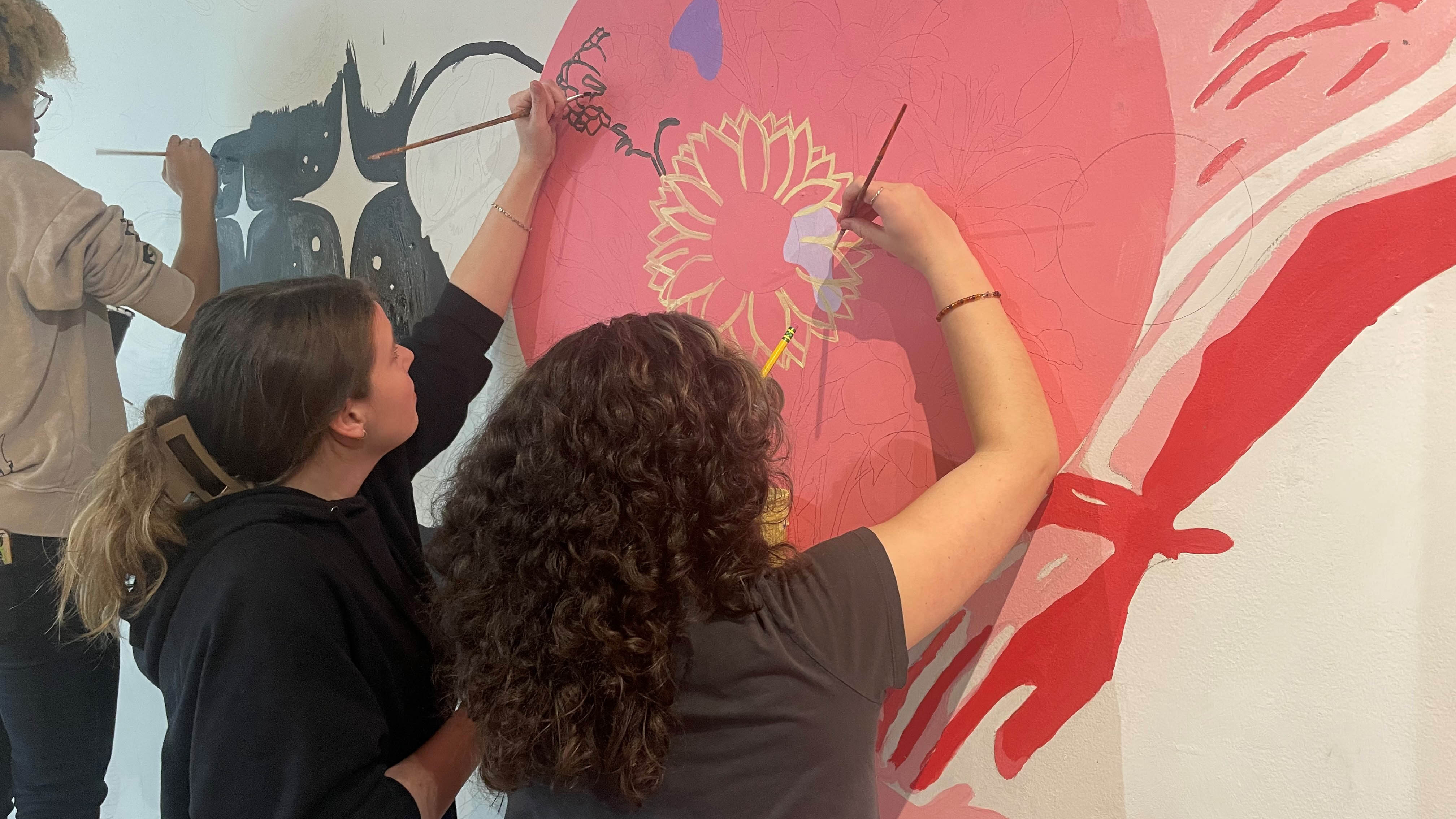In Virginia Wesleyan University’s Neil Britton Art Gallery, floor-to-ceiling murals and three-dimensional pieces with vibrant colors and imagery overlap each other in an innovative student art exhibition.
It’s the third Marlin Mural Festival that showcases student artists and gives them an opportunity to have professional exhibition experience before graduation.
“It feels good to be in a space where other people are also painting and expressing themselves through art,” said India, or Mars, Johnson, a junior with multiple pieces in the exhibit.
This year, student’s pieces share a running theme of purple butterflies – a symbol of raising awareness for domestic violence.
“All of my art is personal to me,” Johnson said. But with art, she embraces that everyone will have their own interpretations.
“Art is in the eye of the beholder,” she said.
Sharpening her neighbor’s pencil with a pocket knife, Johnson said she recognizes how much the project is “a collaborative effort.”
Nearby, another student paints on top of one of Mars’ paintings: a larger-than-life portrait in purple. For this unique exhibition, alteration is the nature of the process.
“Everybody has understood that your painting could get overlapped…things could get changed, and everybody is kind of agreeable to that,” said John Rudel, art professor at Wesleyan and curator of exhibitions at the Neil Britton Art Gallery.
Rudel said this endeavor started out as “a bit of an experiment.” But the unfolding process has turned out “better than [he] could have imagined.”
“There’s always the potential of weird for weird’s sake,” Rudel said. Instead, he found a coherent story emerging through the collective effort.
“It’s fascinating how it becomes cohesive when there’s not a lot of parameters put on the students,” he said.

Virginia Wesleyan participating in the Marlin Mural Festival were able to collaborate on large pieces of art in the Neil Britton Art Gallery.
The project has several major benefits to rising artists, the first being marketable experience.
“We were looking for ways to get our students more involved in making and displaying artwork,” Rudel said. Portfolio-building experiences are a crucial, but often overlooked, aspect for budding art students.
Outside of a traditional classroom setting, Rudel can create a teaching space that “models the professional endeavor of getting commissions.”
According to Rudel, this sort of primary learning experience is more important than ever following the pandemic.
Here, students are “in the real world, making something, bumping into somebody beside you…it’s a celebration of shared space, shared experience—real things in the real world,” Rudel said.
Collaboration is woven through both the final result and the process itself. Besides pocket knife pencil-sharpenings, the students are sharing tools, mixing paints together and providing feedback to one another in real time.
While some of the students, like Mars Johnson, are art majors, they compromise a minority of the creative force behind the mural. Everyone from engineering to business majors is participating.
Rudel, as both the festival’s supervising art professor and the Director of Undergraduate Research, understands the multifaceted nature of many creative people.
“I find a lot of similarities in the kind of creative process that artists engage in and the creative process of sciences and academics in general,” he said.
These similarites include the process of pitching an idea, receiving feedback and public presentation of the execution—skills for which the practice and demonstration are crucial to many post-graduation career paths.
“With every commissioned piece…you learn something,” Johnson said. “The practice gives a very different experience.”





